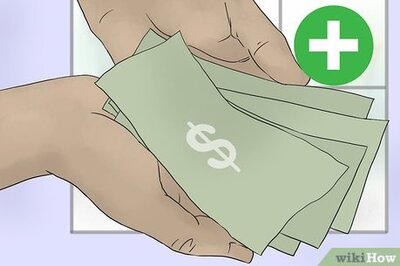
views
For the last year or so, I have been fending off eating a samosa as far as possible. For me, it is a test of my resolve and determination because that’s how much I really like samosas, and once I start eating one, it’s never enough.
I’m talking about the Punjabi samosa, the big fat one filled with potato and peas, with a lovingly balanced mix of spices including Amchur, Saunf and Garam Masala. It’s hard to resist. Even in a city like Mumbai, you will find samosas frying early in the morning outside most railway stations, road junctions, crowded residential precincts as well as office areas. The aroma whelms you as you walk or drive past.
At shoots, be it a film one or TV’s, the standard 4 pm ‘nashta’ will always include Punjabi Samosas, that’s when there’s not a prayer that will help you resist. The samosa comes hot, crisply golden fried, and you have had a longish tough day, and you are hungry. The most determined will put their heads into a bowl of kale salad and beans, but the shameless like me will most definitely pick one up.
Unfortunately, like most good things in life, the samosa is quite fattening, about 400 calories per samosa. While I’d love to make a full meal out of three samosas, I’m not sure it’s good for one who is trying to knock off a few kilos.
But interestingly, the origin of the ‘samosa’ is not sub-continental and absolutely not Indian.
If you were to anatomise a samosa, what is it actually? It’s pastry or bread stuffed with sweet or savoury and deep-fried. It’s a food common amongst many cultures. Which puts the samosa straight in the families of the Portuguese Pastel, the Spanish Empanadas, Italian Calzone, or a South East Asian Curry Puff.
Historians trace the name and the triangular shape to the pyramids in Central Asia, called ‘samsa’ and to the meat filled Uzbek version ‘Pompoqcha Somsa’ (Samsa with yeast dough). The word is derived from ‘Sanbosag’ in Persian and in the North Africa Middle East area referred to as ‘Sanbusak’, ‘Sanbusaq’ or even ‘Sanbusaj’.
Nowadays, the Punjabi samosa is available in smaller sizes as well. Call them cocktail samosas or what you may, they feel a little less guilty when you pop a couple of them in your mouth. They could be stuffed with the same Punjabi samosa potato and pea slice mix or even mushy green peas like in a Gujarati Ghughra. I had some the other day, which has a mildly sweet and spicy mixture of paneer, spices, and green chillies. Not bad.
The other kind of samosa are the ‘Patti Samosa’. Here the outer covering or the Patti is crisper, thinner, a bit like a spring-roll pastry. This samosa is sold everywhere, in the streets and stalls as well as restaurants during the Ramadan month. It is filled with bright, minty, spicy and smoky meat and fried to crispy golden perfection, and is a delicacy that now appears only with the “Eid ka Chand”. It is rare to find a Mutton Keema Samosa in Mumbai on a regular basis. Though, as they say, “dhoond ne se, khuda bhi mil jaata hai”. So, between Irani restaurants and a few Muslim restaurants like Kayani Café at Dhobi Talao, and Jafferbhai and Persian Darbar, Mutton Samosa is usually available. However, there is a shop along the wall of one of the oldest nearly 150 years old Parsi Fire Temple at Cama Baug. Near Old Khetwadi Road, this shop sells pure vegetarian ‘Patti Samosa’. If you ask me what the filling is, I have no idea. I’ve tried to decipher the taste all these years and all I could come up with is that it’s a mixture of shredded vegetables with lots of onion in some kind of spices. It’s served with a spicy, raw papaya chutney, with shredded coconut, which is more of a salad. Even my hardcore meat-eating friends swear by these samosas.
But with the growing popularity of Bohri food, or the cuisine of the Dawoodi Bohra Community, the smoked Keema Samosa has made a glorious comeback. Partly amplified by those, who launched the successful brand ‘Bohri Kitchen’, they actually romanticised their Smoked Keema Samosa by even creating a ceremony or method with which it needed to be eaten and savoured.
You can have the Mutton Samosa with a ceremony, or just by itself off a man with a newspaper lined basket, selling them hot at Mohammed Ali Road. You can eat a deep-fried Punjabi samosa, with sweet and spicy chutney and chole, or crushed as a chaat or in-between breads as they do in the streets of Mumbai. Or at Guru Kripa at Sion, which continues to make over 40,000 samosas a day.
Kunal Vijayakar is a food writer based in Mumbai. He tweets @kunalvijayakar and can be followed on Instagram @kunalvijayakar. His YouTube channel is called Khaane Mein Kya Hai. The views expressed in this article are those of the author and do not represent the stand of this publication.
Read all the Latest Lifestyle News here




















Comments
0 comment